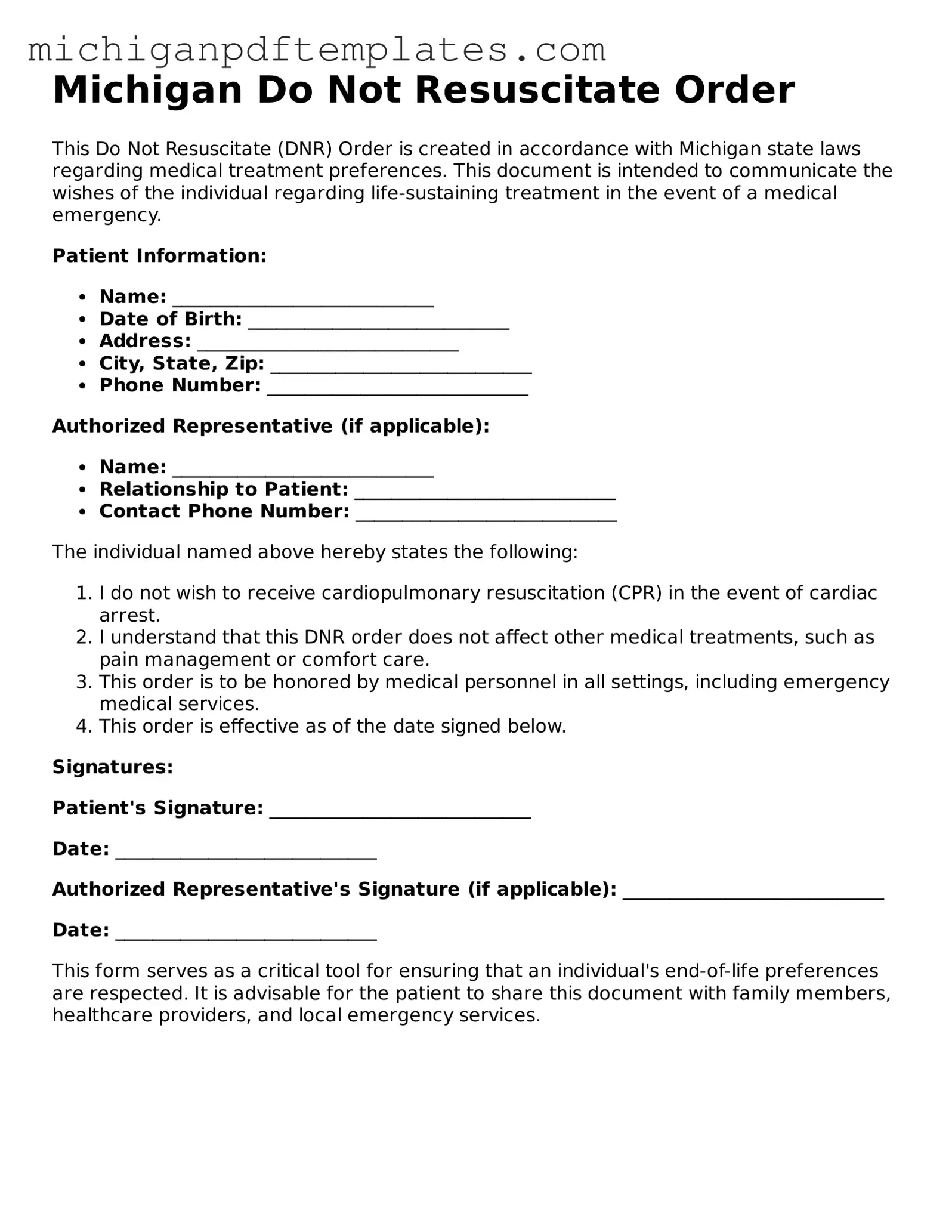The Michigan Do Not Resuscitate (DNR) Order form serves as a critical document for individuals who wish to communicate their preferences regarding resuscitation efforts in the event of a medical emergency. This form is particularly significant for patients with serious health conditions or those who are nearing the end of life, as it ensures that their wishes are respected by healthcare providers. The DNR Order must be signed by both the patient and their physician, indicating a mutual understanding of the patient's health status and desires. It is essential for the form to be readily accessible, as emergency medical personnel are trained to look for it in situations where a patient’s heart stops or they stop breathing. Additionally, the form includes important information about the patient's medical history and any other relevant directives, allowing for a more comprehensive understanding of their healthcare preferences. By clearly outlining the desire to forego resuscitation, the DNR Order aims to alleviate the emotional burden on families and healthcare providers during critical moments, fostering a respectful approach to end-of-life care.
